
San Cristobal de las Casas: A Colonial Gem in the Heart of Chiapas
Discover San Cristobal de las Casas, a captivating blend of colonial charm, indigenous culture, and stunning natural beauty in the heart of Chiapas, Mexico.
San Cristobal de las Casas, nestled in the highlands of Chiapas, Mexico, is a vibrant blend of colonial charm and indigenous culture. As you wander through its cobblestone streets, you'll be captivated by the colorful facades of colonial-era buildings, each telling a story of the town's rich history and heritage. The town's main square, Plaza 31 de Marzo, is a bustling hub where locals and tourists alike gather to enjoy the lively atmosphere and street performances. The town is renowned for its vibrant markets, such as the Mercado de Santo Domingo, where you can find a plethora of handcrafted goods, textiles, and traditional Mayan crafts. Don't miss the chance to explore the Templo de Santo Domingo, a stunning example of Baroque architecture with intricate details. For a deeper understanding of the region's indigenous cultures, visit the Na Bolom Museum, which offers insights into the lives and traditions of the local Maya communities. San Cristobal de las Casas is also a gateway to the natural wonders of Chiapas. Just a short drive from the town, you can explore the breathtaking Sumidero Canyon, the mystical Agua Azul waterfalls, and the ancient ruins of Palenque. With its unique blend of history, culture, and natural beauty, San Cristobal de las Casas is an unforgettable destination for any traveler.
Local tips in San Cristobal de las Casas
- Visit the markets early in the day to avoid the crowds and find the best selection of goods.
- Wear comfortable shoes as the cobblestone streets can be uneven and tiring to walk on.
- Learn a few basic phrases in Spanish or the local Mayan language to enhance your interactions with locals.
- Try traditional Chiapas cuisine at local eateries, especially dishes like tamales and mole.
- Bring a light jacket as the highland climate can be cool, especially in the evenings.
San Cristobal de las Casas: A Colonial Gem in the Heart of Chiapas
San Cristobal de las Casas, nestled in the highlands of Chiapas, Mexico, is a vibrant blend of colonial charm and indigenous culture. As you wander through its cobblestone streets, you'll be captivated by the colorful facades of colonial-era buildings, each telling a story of the town's rich history and heritage. The town's main square, Plaza 31 de Marzo, is a bustling hub where locals and tourists alike gather to enjoy the lively atmosphere and street performances. The town is renowned for its vibrant markets, such as the Mercado de Santo Domingo, where you can find a plethora of handcrafted goods, textiles, and traditional Mayan crafts. Don't miss the chance to explore the Templo de Santo Domingo, a stunning example of Baroque architecture with intricate details. For a deeper understanding of the region's indigenous cultures, visit the Na Bolom Museum, which offers insights into the lives and traditions of the local Maya communities. San Cristobal de las Casas is also a gateway to the natural wonders of Chiapas. Just a short drive from the town, you can explore the breathtaking Sumidero Canyon, the mystical Agua Azul waterfalls, and the ancient ruins of Palenque. With its unique blend of history, culture, and natural beauty, San Cristobal de las Casas is an unforgettable destination for any traveler.
Iconic landmarks you can’t miss
Catedral de San Cristóbal de las Casas
Explore the enchanting Catedral de San Cristóbal de las Casas, a stunning colonial masterpiece in the heart of Chiapas, Mexico, steeped in history and culture.
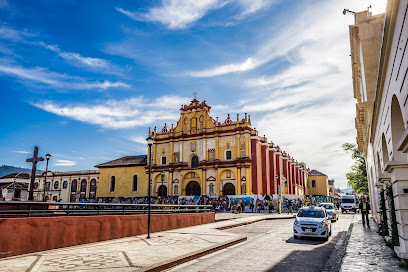
Museo del Ámbar
Explore the exquisite Museo del Ámbar in San Cristóbal de las Casas, where nature's beauty meets cultural heritage in a captivating display of amber treasures.

El Arcotete
Explore the stunning landscapes and unique rock formations of El Arcotete, an ecological park that offers adventure and tranquility in Chiapas.

Casa Na Bolom
Discover the rich cultural heritage of Chiapas at Casa Na Bolom, a unique cultural center and museum nestled in San Cristóbal de las Casas.

Museo Mesoamericano del Jade
Explore the fascinating world of jade and Mesoamerican culture at the Museo Mesoamericano del Jade in San Cristóbal de las Casas.

Reserva Ecológica y Jardín de Orquídeas Moxviquil
Explore the stunning flora and tranquil landscapes of Reserva Ecológica y Jardín de Orquídeas Moxviquil, a botanical gem in San Cristóbal de las Casas.

Arco del Carmen
Experience the historical elegance of Arco del Carmen, a stunning landmark in San Cristóbal de las Casas, rich in culture and breathtaking architecture.
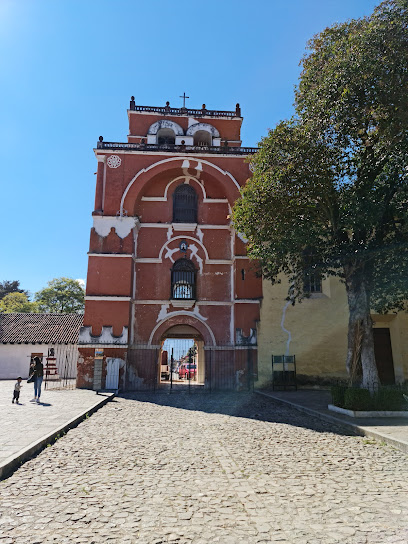
Centro de Textiles del Mundo Maya
Discover the vibrant world of Mayan textiles at the Centro de Textiles del Mundo Maya in San Cristóbal de las Casas, a true cultural gem.

Andador Turistico Miguel Hidalgo, San Cristobal de las Casas; Chiapas.
Explore the vibrant culture and history of San Cristobal de las Casas at Andador Turistico Miguel Hidalgo, a must-visit destination for every traveler.

Andador De Guadalupe
Explore the vibrant Andador De Guadalupe in San Cristóbal de las Casas—an artistic and cultural haven filled with local crafts, delicious cuisine, and charming cafés.

La Enseñanza, Casa de la Ciudad
Explore La Enseñanza, Casa de la Ciudad, a museum in San Cristóbal de las Casas that showcases Chiapas' rich cultural heritage and vibrant artistry.

Andador del Carmen
Discover the vibrant Andador del Carmen, a cultural hub in San Cristóbal de las Casas filled with artisan shops, restaurants, and rich Chiapan heritage.

Arches Park.
Explore the beauty of Arches Park, a tranquil oasis in San Cristóbal de las Casas, blending nature, culture, and community.
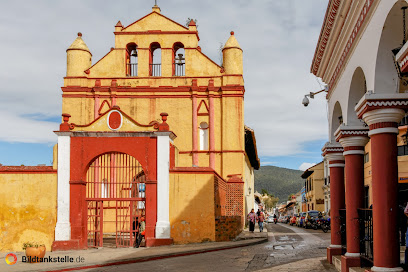
Museo de los Altos de Chiapas Ex Convento de Santo Domingo
Discover the vibrant cultural heritage of Chiapas at the Museo de los Altos de Chiapas, showcasing art, history, and traditions of the region.

Andador La Penitencia De San Cristobalito
Discover the vibrant Andador La Penitencia De San Cristobalito, a cultural gem of San Cristobal de las Casas with art, cuisine, and charming architecture.

Unmissable attractions to see
Catedral de San Cristóbal de las Casas
Discover the stunning beauty of Catedral de San Cristóbal de las Casas, a cultural and architectural gem in the heart of Chiapas, Mexico.

Museo del Ámbar
Explore the rich history and stunning beauty of amber at Museo del Ámbar in San Cristóbal de las Casas, a must-visit destination for all tourists.

El Arcotete
Explore the breathtaking landscapes and unique rock formations at El Arcotete, a serene ecological park in Chiapas, Mexico.

Parque Ecoturístico Rancho Nuevo
Explore the serene beauty and ecological wonders of Parque Ecoturístico Rancho Nuevo, a must-visit destination near San Cristóbal de las Casas.

Museo Mesoamericano del Jade
Explore the significance of jade in Mesoamerican cultures at Museo Mesoamericano del Jade in San Cristóbal de las Casas.
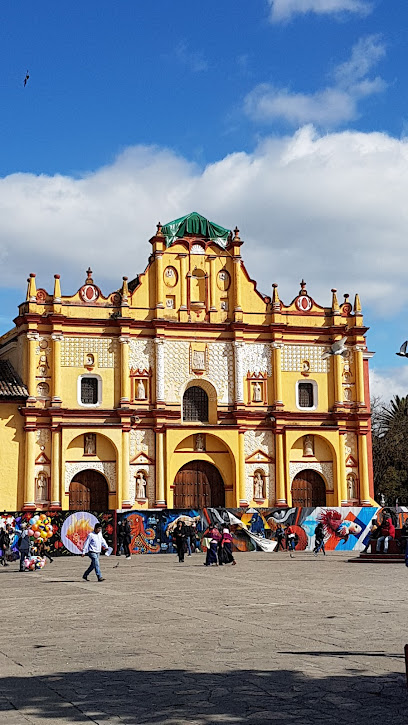
Grutas Del Mamut
Discover the breathtaking beauty of Grutas Del Mamut, where stunning cave formations meet lush landscapes in Chiapas, Mexico.

Museo Jtatik Samuel
Discover the vibrant culture and traditions of the Tzotzil community at Museo Jtatik Samuel in San Cristobal de las Casas, Chiapas.

Arches Park.
Experience the enchanting beauty of Arches Park in San Cristóbal de las Casas, a perfect urban oasis for relaxation and cultural exploration.
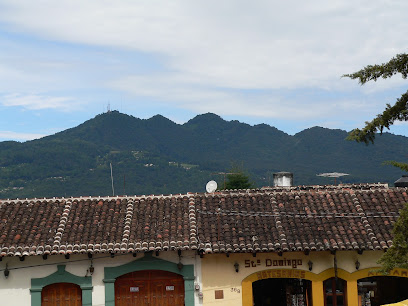
Museo de los Altos de Chiapas Ex Convento de Santo Domingo
Explore the cultural heart of Chiapas at Museo de los Altos de Chiapas, a must-visit museum showcasing the region's rich ethnographic and artistic heritage.

Museo Sergio Castro
Explore the rich heritage of Chiapas at Museo Sergio Castro, where local craftsmanship and culture come to life in an intimate setting.
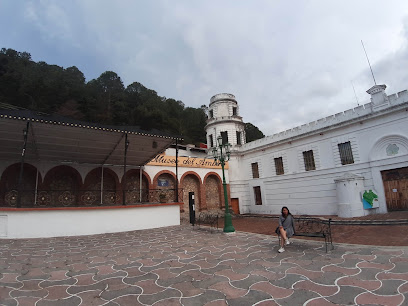
Essential places to dine
El Caldero
Experience traditional Mexican cuisine at El Caldero in San Cristóbal de las Casas - where every meal is a celebration of flavor.
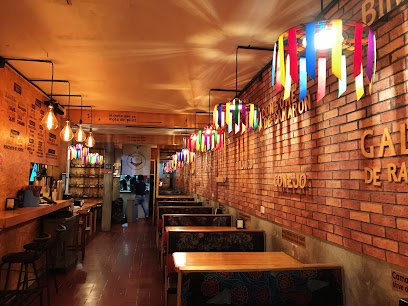
Restaurante La Lupe
Experience authentic Mexican cuisine at Restaurante La Lupe in San Cristóbal de las Casas – a true taste of tradition amidst vibrant local culture.

Café Bar 500 Noches
Discover the vibrant flavors of San Cristóbal de las Casas at Café Bar 500 Noches - a perfect blend of breakfast delights and evening entertainment.

Restaurante Las Pichanchas (San Cristóbal)
Experience the authentic flavors of Chiapas at Restaurante Las Pichanchas in San Cristóbal de las Casas – a culinary haven for all food lovers.

Cocoliche
Experience the vibrant flavors of Chiapas at Cocoliche, a top-rated restaurant in San Cristóbal de las Casas offering exquisite traditional Mexican cuisine.

Restaurante el Fogón de Jovel
Experience traditional Mexican cuisine at Restaurante el Fogón de Jovel in San Cristóbal de las Casas - perfect for breakfast lovers!

Trattoria Catanzaro
Experience authentic Italian cuisine at Trattoria Catanzaro in San Cristóbal de las Casas—where flavor meets tradition.

Te Quiero Verde
Experience authentic vegan dining in San Cristóbal de las Casas at Te Quiero Verde - where local ingredients meet innovative recipes.

Maya Pakal Restaurant
Discover the vibrant flavors of Mexico at Maya Pakal Restaurant, where traditional dishes meet international cuisine in San Cristóbal de las Casas.

BELIL SABORES DE CHIAPAS
Discover the flavors of Chiapas at Belil Sabores de Chiapas – where every meal supports local artisans and fair trade practices.
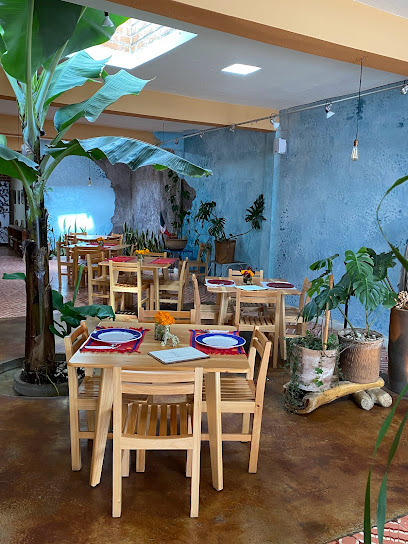
Tierra y Cielo Restaurante
Experience authentic Mexican cuisine at Tierra y Cielo in San Cristóbal de las Casas—where tradition meets innovation in every bite.

El Secreto
Experience authentic Mexican flavors at El Secreto, a must-visit restaurant in San Cristóbal de las Casas offering delightful dishes and inviting ambiance.

Cardamomo Cocina Hindu
Discover authentic Indian cuisine at Cardamomo Cocina Hindu in San Cristóbal de las Casas – where every dish tells a flavorful story.

Markets, malls and hidden boutiques
Mercado de Dulces y Artesanías Ámbar
Discover the colorful Mercado de Dulces y Artesanías Ámbar, a vibrant market in San Cristóbal de las Casas, filled with artisanal handicrafts and local sweets.
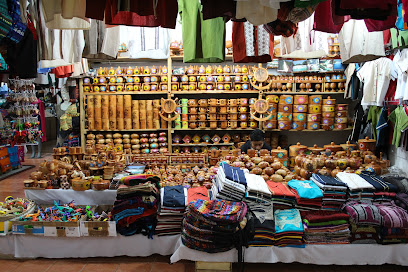
Centro de sancristobal, chiapas
Explore the colorful Centro de San Cristóbal in Chiapas for an unforgettable shopping and cultural experience.

Chocolateria - Cacao Nativa Suc. Boutique - Andador Guadalupano
Experience the finest artisanal chocolates at Cacao Nativa in San Cristóbal de las Casas, where quality meets delightful flavors.

Na Casa Galería
Explore a vibrant clothing store in San Cristóbal de las Casas, featuring handcrafted Mexican textiles and unique local goods.

Eklektik
Explore Eklektik for unique artisanal crafts and souvenirs in the vibrant heart of San Cristóbal de las Casas, Chiapas.
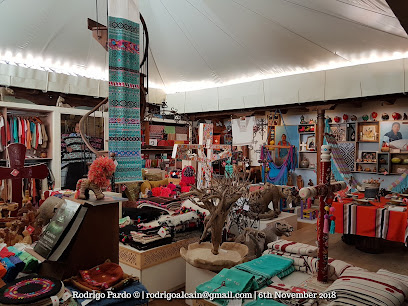
Bad People - Ropa Vintage
Explore the eclectic fashion scene at Bad People / Ropa Vintage in San Cristóbal de las Casas, where unique vintage finds meet local culture.

Me Encanta Boutique
Explore the vibrant culture of Chiapas at Me Encanta Boutique, where unique handcrafted treasures await every visitor.
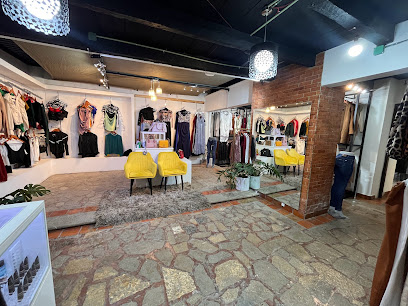
¡Ay Güey!
Explore unique local fashion at ¡Ay Güey! in San Cristóbal, where each piece tells a story of Chiapas' rich cultural heritage.
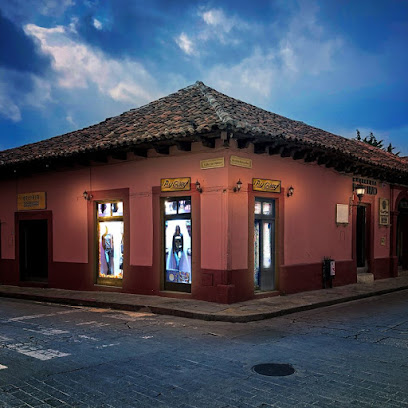
Boutique Arte Sandía
Explore Boutique Arte Sandía in San Cristóbal de las Casas for unique handicrafts, clothing, and a glimpse into local artistry.

El Mundo De La fantasía Boutique
Discover unique clothing and local craftsmanship at El Mundo De La Fantasía Boutique in San Cristóbal de las Casas, your gateway to Chiapas culture.
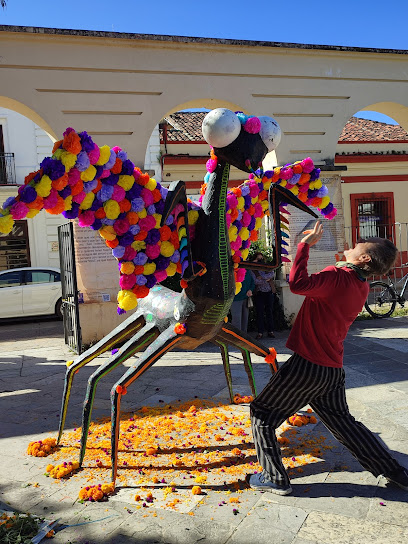
Essential bars & hidden hideouts
Café Bar 500 Noches
Experience the vibrant culture of San Cristóbal de las Casas at Café Bar 500 Noches – a perfect blend of local cuisine and espresso excellence.
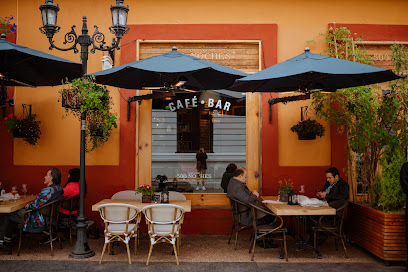
Baruva Food&Drinks
Discover the electrifying nightlife at Baruva Food&Drinks, where vibrant music meets a diverse drink menu in the heart of San Cristóbal de las Casas.

Mezcalito420
Dive into the vibrant nightlife of San Cristóbal de las Casas at Mezcalito420, where live music and delicious tapas create unforgettable memories.

Clover Irish Pub
Experience the spirit of Ireland at Clover Irish Pub, where great food, drinks, and live music create unforgettable moments in San Cristóbal de las Casas.

Posheria
Discover the vibrant charm of Posheria, a bar in San Cristóbal de las Casas, where local flavors meet a lively atmosphere, perfect for any traveler.

La Popu Mezcalería
Discover La Popu Mezcalería in San Cristóbal de las Casas, where authentic flavors meet a lively atmosphere and exceptional mezcal.

Panóptico
Experience the vibrant flavors of Chiapas at Panóptico, San Cristóbal's premier restaurant and bar, perfect for food lovers and night owls alike.

Jack Rock Y Chela
Experience the vibrant nightlife of San Cristóbal de las Casas at Jack Rock Y Chela, a bar offering local craft beers and unique cocktails.

CALACA CASA DE MIXOLOGIA
Experience the vibrant flavors at Calaca Casa de Mixologia, where exquisite grill dishes and handcrafted cocktails come together in the heart of San Cristóbal de las Casas.

SANTITOS
Experience the vibrant nightlife at Santitos Bar in San Cristóbal de las Casas, where local charm meets eclectic cocktails and live music.

History of San Cristobal de las Casas
-
San Cristóbal de las Casas was founded in 1528 by Spanish conquistador Diego de Mazariegos, originally as San Cristóbal de los Llanos. The city was established on the ruins of a Tzeltal settlement called "Moxviquil". Its strategic location in the highlands of Chiapas made it a focal point for Spanish colonization, as well as a center for the spread of Christianity among the indigenous populations.
-
The 16th and 17th centuries saw the Catholic Church play a pivotal role in the establishment of San Cristóbal's identity. The construction of the Cathedral of San Cristóbal, completed in 1528, marked the city's religious significance. Missionaries, particularly the Dominicans, were instrumental in evangelizing the local indigenous population, leading to a complex interplay between European and indigenous cultures.
-
In the 19th century, the tensions between indigenous communities and the European-descended population escalated, culminating in the Caste War of Yucatán (1847-1901). Although primarily centered in the Yucatán, its effects resonated in Chiapas. Indigenous groups in and around San Cristóbal de las Casas sought to reclaim their rights, leading to a period of unrest that highlighted the socio-political struggles faced by the indigenous peoples.
-
The 1994 Zapatista uprising, led by the Zapatista Army of National Liberation (EZLN), marked a significant moment in the history of San Cristóbal de las Casas. The uprising was a response to the North American Free Trade Agreement (NAFTA), which was perceived as a threat to indigenous rights and livelihoods. San Cristóbal became a hub for Zapatista support and activism, drawing international attention to the struggles of indigenous communities in Chiapas.
-
In the late 20th and early 21st centuries, San Cristóbal de las Casas has seen a resurgence in interest regarding its indigenous heritage and culture. The city has become a center for cultural tourism, showcasing traditional crafts, indigenous textiles, and local cuisine. Events such as the Feria de la Primavera and the Day of the Dead celebrations highlight the rich tapestry of indigenous and mestizo cultural traditions that continue to thrive in the region.
San Cristobal de las Casas Essentials
-
San Cristobal de las Casas is accessible by various means of transportation. The nearest airport is Ángel Albino Corzo International Airport (TGZ), located approximately 88 kilometers away. From the airport, you can take a taxi or a shuttle service to the city, which takes about 1.5 to 2 hours. Buses from major cities like Tuxtla Gutierrez, Palenque, and Ocosingo regularly operate and are a popular choice among travelers. The bus journey from Tuxtla Gutierrez takes around 1.5 hours.
-
San Cristobal de las Casas is a walkable city, with many attractions located within the historic center. Taxis are available for longer distances and are relatively inexpensive. Local buses, known as 'colectivos', can take you to nearby villages and attractions. Bicycle rentals are also available, providing a great way to explore the city and its surroundings at your own pace.
-
San Cristobal de las Casas is generally safe for tourists, but it is advisable to exercise caution. Avoid walking alone at night in less crowded areas and keep an eye on your belongings in busy markets. Certain areas, particularly outside the main tourist zones, may have higher crime rates. Stay informed about local safety updates and ask locals for advice on which areas to avoid.
-
In case of emergency, dial 911 for police, fire, or medical assistance. The local hospital, Hospital de las Culturas, provides emergency services. It is advisable to have travel insurance that covers medical emergencies. Pharmacies are available throughout the city for minor health issues, and many have staff who speak English.
-
Fashion: Do dress modestly, especially in religious sites. Avoid wearing revealing clothing. Religion: Do respect local customs and traditions, and always ask for permission before taking photos in churches. Public Transport: Do be courteous to fellow passengers and offer your seat to the elderly. Don’t eat or drink on buses. Greetings: Do greet locals warmly, using a handshake or a friendly smile. Eating & Drinking: Do try local dishes and accept food offerings, but don't waste food or refuse hospitality, as it may be considered rude.
-
To experience San Cristobal de las Casas like a local, visit the vibrant markets such as Mercado de Santo Domingo for fresh produce and handicrafts. Participate in local festivals and cultural events to gain insight into the indigenous cultures. Engage with local artisans to learn about traditional crafts, and seek out small family-run eateries for authentic Chiapanecan cuisine. Don't miss the opportunity to explore the nearby indigenous villages, which offer unique cultural experiences.
Trending Landmarks in San Cristobal de las Casas
-
Catedral de San Cristóbal de las Casas
-
Museo del Ámbar
-
El Arcotete
-
Casa Na Bolom
-
Museo Mesoamericano del Jade
-
Reserva Ecológica y Jardín de Orquídeas Moxviquil
-
Arco del Carmen
-
Centro de Textiles del Mundo Maya
-
Andador Turistico Miguel Hidalgo, San Cristobal de las Casas; Chiapas.
-
Andador De Guadalupe
-
La Enseñanza, Casa de la Ciudad
-
Andador del Carmen
-
Arches Park.
-
Museo de los Altos de Chiapas Ex Convento de Santo Domingo
-
Andador La Penitencia De San Cristobalito
Nearby Cities to San Cristobal de las Casas
-
Things To Do in Quetzaltenango
-
Things To Do in Chichicastenango
-
Things To Do in Panajachel
-
Things To Do in Lake Atitlán
-
Things To Do in Flores
-
Things To Do in Antigua Guatemala
-
Things To Do in Tikal
-
Things To Do in Guatemala City
-
Things To Do in San Ignacio
-
Things To Do in Campeche
-
Things To Do in Punta Gorda
-
Things To Do in Rio Dulce
-
Things To Do in Livingston
-
Things To Do in Copán Ruinas
-
Things To Do in Oaxaca













